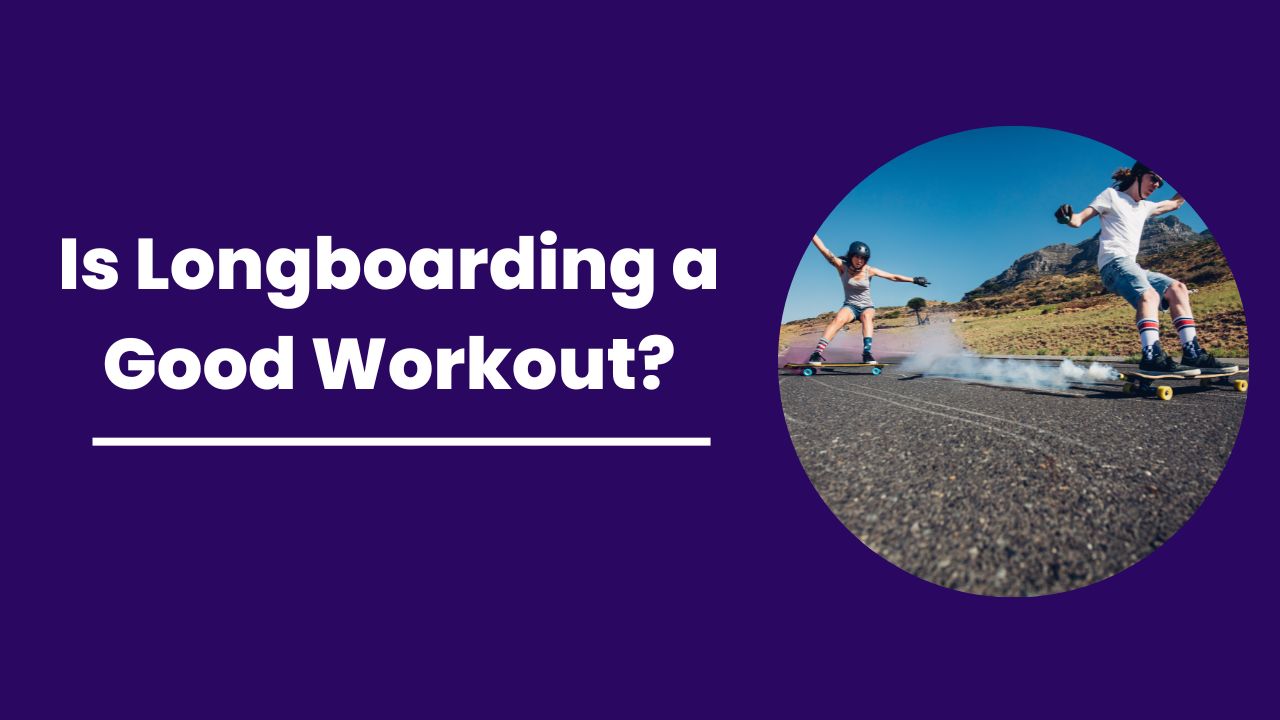Riding a longboard in the rain can be quite fun, but a lot of new longboarders ask, “Can you ride a longboard in the rain?”
If you are one of them, don’t worry; we’ll cover everything related to this question, so you’ve come to the proper spot.

Contents
Can You Ride A Longboard In The Rain?
To simply answer the question, yes, you can ride on a longboard in the rain. But it is not quite advisable or recommended. Because there are numerous risks involved.
You can not only damage your longboard but also yourself by getting into accidents.
Your clothing may also be harmed. Below, we are going to discuss every risk that is involved in riding a longboard in the rain. And after that, we will discuss the precautions and safety measures.
3 Effects Of Rain On Your Longboard
1. Bearings
Bearings made of metal deteriorate more quickly than you might imagine. Because metal bearings become wet after cycling in the rain, the rusting process begins immediately. It is because you are unaware of how moist your bearings are.
Rainwater has no negative effects whatsoever on your longboard bearing. As soon as you go home wearing filthy clothes, exhausted, and feeling too sluggish to clean and dry the bearings, they start to rust.
And at this unknowing moment, they begin to rust. And once rust starts, your board’s rolling objects ultimately start moving less quickly.
2. Deck
Rainwater can also damage your board’s deck. Your deck will undoubtedly be wet when you get back from the storm. Therefore, carefully dry it and store it. However, grip tape will continue to get soiled and wet as usual.
It will start to lose its ability to hold onto objects and might become slippery if you are too lazy to clean it.
Remember the worst adversary of your board is water. Your board will become soggy if it is wet from the rain and you don’t dry it out. Water may weaken your board’s timber, making it more prone to warping or, worse still, causing the layers to separate.
3. Grip Tape
Whether you ride on a dry day or a wet one, grip tape gets quite soiled and rusty. If you step onto a wet, muddy track during a downpour, it may appear to be a little dirtier.
Additionally, your grip tape becomes sticky and adheres to the body of the board as the mud on it dries up.
If you don’t go to clean it frequently, your grip tape will eventually dramatically lose its hold, which might result in an unintended mishap for you. Therefore, don’t neglect to frequently clean your grip tape.
4 Effects Of Rain On Your Safety
i. Accidents
Rainwater makes roads more slippery, and the chances of getting into an accident will increase. As a result, you run the risk of falling when making quick maneuvers while riding a board.
In damp conditions, you’ll probably find it difficult to manage your board. If you happen to be riding on slick surfaces, proceed with extreme caution.
ii. Clothes
Riding on a longboard in the rain can make your clothes wet and dirty. So it is recommended to wear something that is reasonably priced and not too expensive. Especially your shoes can get damaged by rainwater.
Also wear shoes that are not slippery and have a firm grip.
iii. Disease
If you are not too conscious of your health, you can also get a cold or fever by riding a longboard in the rain. So always keep an eye on that, and don’t spend too much time out in the rain.
iv. Falling Down
If your deck or your shoes are slippery, then you most likely end up falling to the ground and getting injured. It is very dangerous to have a slippery deck and shoes, as you are also riding on slippery roads, so you should take care of your security.
Now that you know all the risks involved in riding a longboard in the rain, let’s discuss the safety measures and precautions you have to take to minimize the risk factors.
9 Safety Measures And Precautions
1. Examine Scratches On Your Board
Before going to ride in the rain, check your board thoroughly. The scratches and curbs on your longboard can be dangerous. As the water can go into it and damage the board.
A board with scratches has more potential for warping than a new board.
So, always use a board that doesn’t have scratches on it.
Also, you can use any water resistance substance like hairspray or paint to seal those scratches.
2. Use Ceramic Bearings
Bearings constructed of ceramic are completely watertight. However, the problem is that when it rains, wheels become wet, which causes bearings to lose some grip on the ground.
Your longboard needs appropriate attention in every circumstance to ensure adequate maintenance and upkeep.
While ceramic bearings don’t need to be purchased and require no further care, average bearings often require a lot more drying.
Ceramic bearings still require regular reapplication of a speed cream that may be washed away or good lubrication. Remember that your bearings require additional caution if you ride your longboard frequently on a rainy day.
3. Safety Gear
Safety gear is recommended even if you are not longboarding in the rain. But in rain, it becomes even more important as the risk factor increases. Wear a proper helmet and knee and helmet pad.
Also, wear solid gloves. Shoes that are not slippery are also recommended.
4. Avoid Puddles
They can be a huge risk. For example, a small puddle can be a huge hole, and you can fall into it. So you have to go around them rather than ride from them.
And also, your board and bearing can get wet from them and be damaged.
5. Weight Management
Always keeps your weight in the middle of the board. As your longboard can slip and slide out if you are leaning too far. Always keep your knees bent and steer with your ankle.
6. Bearings
Try to utilize less expensive bearings; for example, you may use some inexpensive bearings for riding on a wet day. So, I believe it won’t cost you too much if anything extraordinary does go wrong.
But if you are utilizing an expensive bearing, you have to clean the bearing after your ride. And after cleaning use bearing lube on them.
7. Extra Longboard
Keep an extra longboard on hand for rainy days; use it just for that reason. You might be able to ride some boards.
However, you don’t ride your all-board in the rain since, in all honesty, you can’t keep up with all of your all-board’s maintenance needs.
So you should utilize your well-chosen, inexpensive board on rainy days. You should maintain it frequently, but if something breaks, it won’t be a major concern because you have to buy it on a rather tight budget.
8. Rain-adapted Wheels Or Waterproof Longboard Wheels
Think about investing in some rain-adapted wheels. They provide more stable traction on the road when it is muddy, for sure.
However, you may DIY at home if you lack the funds to buy them or a second pair of wheels.
Just be careful not to bounce about on a nice set of wheels. Find out how to modify your wheels so they have extra grip on wet days.
9. Cleaning After Ride
After the ride, disassemble your longboard, each and every part, clean every part, and make them dry. You can use a hair dryer or any other device that throws warm air.
It is really important to keep your longboard dry.
As the wet longboard can warp faster.
Does Water Damage Grip Tape?
Grip tape is there on the longboard deck because it gives you traction on the board. You don’t fall so often because of this grip tape and only when you lose balance at all.
But water makes your grip tape start peeling off and because of that, it becomes harder for the rider to stay on the board.
Therefore, riding the board in wet conditions is not so common and not so advisable if you have a high-end expensive longboard.
Are Riding A Longboard In The Cold Safe And Okay?
If you have the necessary abilities, set up, and safety equipment, longboarding in the snow can be a lot of fun. Longboarding in the snow may be entertaining, even as a great start to snowboarding.
Simply avoid driving on ice roads, and drive at a reasonable speed.
Can I Ride My Longboard On A Wet Concrete Surface?
Although you may get away with longboarding on a level piece of pavement, I would not recommend it for the following reasons:
Your bearings will rust as a result of the water, and you will ultimately need to replace them.
Your real board will become wet, expanding and losing whatever pop it may have.
Can Grip Tape Get Ruined By Water?
But frequent soaking and drying might cause grip tape to lose its adherence over time. The tape will begin to come off the deck if that occurs. We avoid getting our boards and grip tape wet because of this.
Riding a longboard on a bumpy road can harm the board and make it more difficult to manage because longboards are meant for smooth terrain.
Where Can You Skateboard When It Rains?
Although rainwater may damage your longboard, that doesn’t mean that you cannot skate when it’s raining.
There are some places that you can use for longboarding:
- Basement
- Abandoned Buildings
- Living room
- Garage
- Indoor skateparks
- Anywhere that isn’t wet
Read More:

